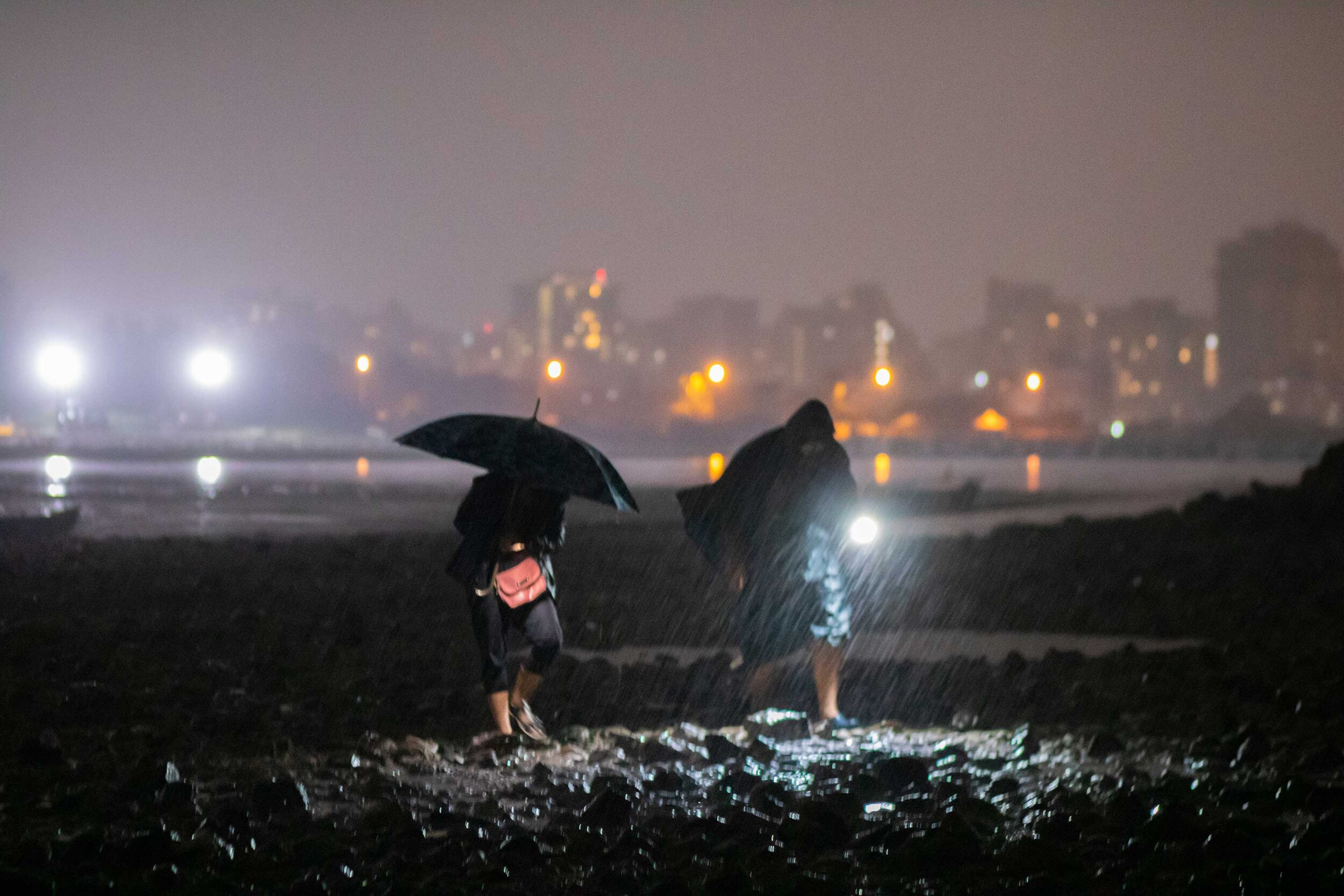
The Path Ahead
The animals you met on these walks (and the others you will hopefully meet on your explorations) exist in tandem with various other living beings.
They have relationships with other animals - some mutually beneficial, others not, but all in a fine balance, and they live alongside humans. The fishers who interact the most with them also know them more every day. They know when the oysters are ready to be picked (not before, not after), they know that the Green mussel can trap your fingers (or your hair!) if you're not quick enough. They know when the animals return and how their numbers are affected by what happens on the coast.
2020 was a year like no other. Over the course of this project, we were faced with many challenges in understanding the animals we were attempting to follow. Of course, seasonal changes are not the same every year, but during 2019-2021, Maharashtra was hit by 3 cyclones (Maha, Kyar and Nisarga) and the shores bore their direct brunt. While there is no written research as evidence to this, we observed a difference in the animals on the shores.
In the aftermath, shores in Mumbai were covered in silt and many of the animals you saw above were missing during the cyclones and for a few months after. In the middle of the year, the coastline saw changes from the coastal road project, so some shores were inaccessible during the construction that continued during lockdown.
Covid 19 drove us all indoors and while we stayed in, the shores may or may not have operated as they usually do, but we were unable to carry out any active documentation in that time, except for a few visits with permits when an animal (like a dolphin or a turtle) was stranded at the beach.
But the good news is this: The intertidal is a space where both wildlife and humans operate. It is a part of the commons. The fact this kind of wildlife thrives in a city as crowded as Mumbai was in itself a revelation, showing that life here is resilient enough to adapt. A community has formed in these last four years, tidepoolers who visit the shores on their own and upload their sightings on the Marine Life of Mumbai project on iNaturalist.org, a joint initiative by the California Academy of Sciences and the National Geographic Society. This global database and its expert researcher forum has encouraged local groups to look closer. Going forward, it will be interesting and vital to see how the ecosystem adapts to the significant changes in its coastline, and how the creatures build themselves a home around it.

The intertidal is a space where both wildlife and humans operate. It is a part of the commons.
Zoantharia at the Nepean Sea Road shore before and after the cyclones in 2019.
A colony of corals on a shore covered in siltation after the monsoon.
Construction at Haji Ali, one of the sites for the coastal road.
Monsoon arrives forcefully on some of the shores - the Koliwada houses and the tide line
Juhu's rocky shore during monsoon.
The trajectory of the first of three cyclones - Kyarr
The trajectory of the second cyclone, Maha
The trajectory of the third cyclone, Nisarga
